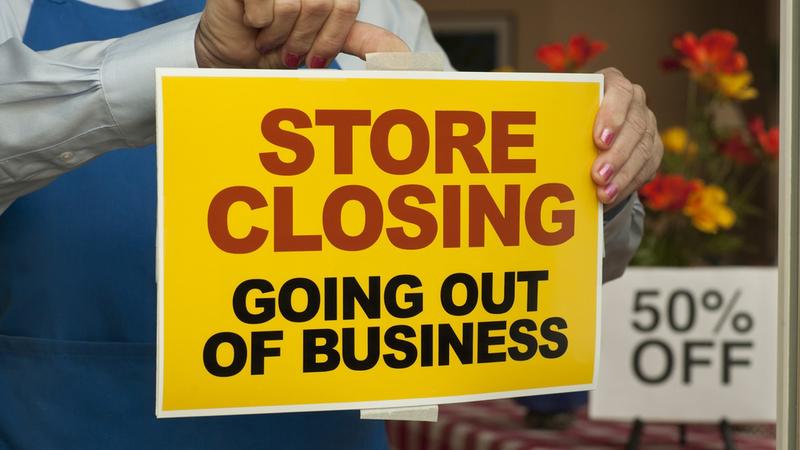How To Find An Edge In Trading

The terminology in the business world tin can be quite perplexing, particularly when it comes to coin matters, but understanding the many stringent rules associated with finances is disquisitional to a company's survival and success. Ideally, a business thrives, and owners tin can focus on laws related to financial reporting, stock offerings and money direction, but it's equally important to follow the correct legal rules and procedures when a concern is struggling financially.
If a visitor's financial difficulties progress to the point of insolvency — a state that occurs when the company can no longer pay its debts — very specific rules must be followed to ensure that insolvent trading doesn't occur. To help you improve understand the rules and repercussions, we've put together this quick guide to explicate insolvent trading claims and related topics like liquidation and bankruptcy.
In layman's terms, yous tin think of insolvency every bit the trigger for bankruptcy. Information technology's a sign of astringent economic distress that comes in 2 forms: greenbacks flow insolvency and balance sheet insolvency. Cash catamenia insolvency occurs when debtors don't have the coin to make payments on financial obligations when they're due. In some cases, it could be a temporary state of affairs that is corrected as before long as money comes into the company from sales, loans or other sources.

Balance sheet insolvency is more severe and occurs when the visitor's debts are greater than its assets. This blazon of insolvency is often the tipping indicate that pushes a visitor over the edge into defalcation, either in the form of debt restructuring or total liquidation of avails. Due to the differences in types, a business can be insolvent without existence bankrupt if it tin can right the cash flow problem. However, it can't be bankrupt without first beingness insolvent.
Insolvent Trading Claims: A Brief Definition
For businesses effectually the world, putting shareholders starting time is par for the class during normal business operations. However, in one case a company becomes insolvent, the focus must legally shift to taking care of creditors above everyone else. Continuing daily business organisation operations that could potentially incur additional debt when a business concern already can't pay its existing debts leaves company directors vulnerable to insolvent trading claims. If these claims are accounted valid, the directors are field of study to civil penalties, including being held personally responsible for debts incurred during times of insolvency.

In Europe, insolvency laws are similar to U.S. defalcation laws, except they have traditionally focused less on restructuring insolvent businesses to give them a hazard to become profitable again. In other words, reorganization bankruptcy — Chapter 11 in the U.S. — is much less common in Europe, although the laws vary from country to country. Experts believe that reform is inevitable and will give businesses a better chance of recovering while limiting creditors' losses.
Who Makes Insolvent Trading Claims?
When a visitor becomes insolvent, a liquidator is appointed to protect the interests of the company's creditors and liquidate avails to pay debts. When liquidators are notified of insolvent trading, they are obligated to investigate. They often initiate insolvent trading claims themselves, but creditors can also take action regarding their debts. The claim flow generally extends for a flow of several years, starting from the onset of liquidation. Unless a company'due south directors had reasonable grounds to believe the visitor was solvent when they conducted business, creditors could pursue legal action to collect debts from the directors personally.

Liquidation Explained
In European markets and U.S. bankruptcies like Affiliate 7, insolvency triggers the decision to end a concern and liquidate the concern' assets, either by distributing its avails to various creditors or by selling the avails and distributing the gain to the various creditors. Once the process is consummate, the business no longer exists.

In the U.Southward., the Department of Justice oversees the distribution of assets. In most cases, the first distributions go to creditors with the most senior claims who secured collateral on the loans they provided to the business concern. Unsecured creditors like bondholders and employees are paid next. If whatsoever funds are left after paying those debts, shareholders receive the remaining assets.
U.Due south. Bankruptcy Laws
According to IRS rules in the U.Due south., a person or entity is insolvent when their total liabilities are greater than their total assets. At that point, bankruptcy is a valid legal tool governed past federal laws for creating a program for paying creditors. Bankruptcy laws in the U.Southward. favor reorganization of debt more than often than European insolvency systems. Chapter 11 bankruptcy allows a business' direction team to continue with daily operations throughout the reorganization process.

The defalcation courts take to approve all major business decisions, just this gives the business a risk to restructure its debt to reduce payments and potentially regain profitability. Affiliate 7 defalcation, still, requires the business to halt all operations. The courts appoint a trustee to sell the company's assets to pay the visitor's debts in this grade of defalcation.
Source: https://www.askmoney.com/investing/insolvent-trading-claim?utm_content=params%3Ao%3D1465803%26ad%3DdirN%26qo%3DserpIndex
Posted by: hancockrouressedly.blogspot.com


0 Response to "How To Find An Edge In Trading"
Post a Comment